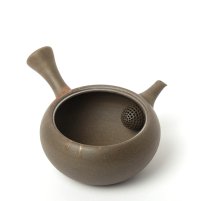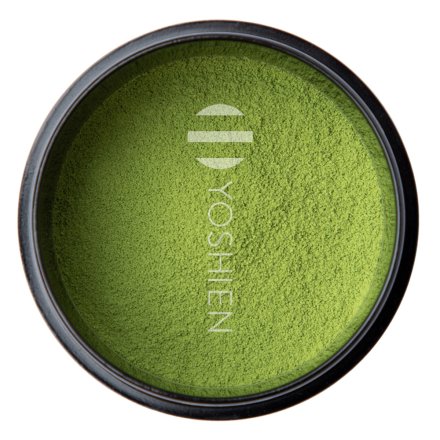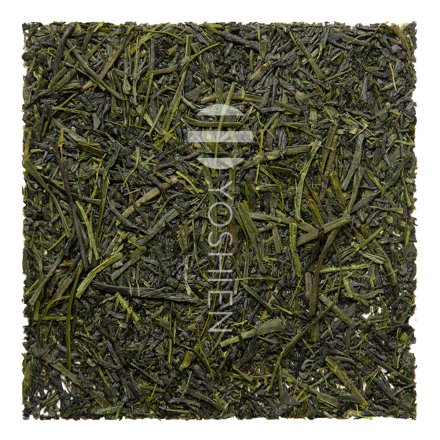A Kyusu is a traditional Japanese tea pot for the preparation of Japanese green tea. Fired from natural clay and unglazed on the inside, the body reacts with the water and the tea and brings out certain aromas. The tea can steep optimally free-floating in the pot, moreover, the leaves lie advantageously over the integrated strainer when pouring, so that they filter themselves on the one hand, on the other hand, they allow a more complete extraction of flavours and ingredients. The tea is only ever brewed fresh, but several times. The side handle and the knob on the lid prevent the hand from coming into contact with the excessively hot body.
Throughout history, there have been hundreds of ceramic centres in Japan, wherever the volcanic soil had rich clay deposits. Some are still active today, including the six most important "old kilns" (jap. Rokkoyo): Bizen, Shigaraki, Seto, Echizen, Tamba and Tokoname. But also others such as Karatsu, Hagi, Mino, Shino, Oribe, Setoguro Ki-Seto and Kyo-yaki, and for tea ceramics above all Banko in Yokkaichi.
They differ regionally according to the composition of the clay, the prevalent firing method, the handwork steps, decoration and glazing techniques and the fineness or deliberate coarseness of the production. Above all, the clay and the firing determine the flavourful character of the kyusu, i.e. which types of flavours of a tea are lifted or subdued by it. Therefore, tea lovers often have different kyusu of different qualities at home, in order to enable the optimal preparation depending on the tea and its quality. Among the finest and most valuable kyusu are those made by famous artists who are famous not only for their special talents in manufacturing, form and decoration, but also for their own production of the natural clay as well as their own firing techniques that result in unique qualities.
Led by the living national treasures, the most highly awarded masters, there is a whole hierarchy of craftsmanship, ranging from studios that still draw on the reputation of past masters, young and wild studios, to family-run micro-enterprises that produce the bulk of everyday ceramics. Important collector's items are the vintage kyusu, which are still made entirely from now exhausted deposits of the highest quality natural clay of the respective region and thus achieve incomparable qualities in tea infusion.



















